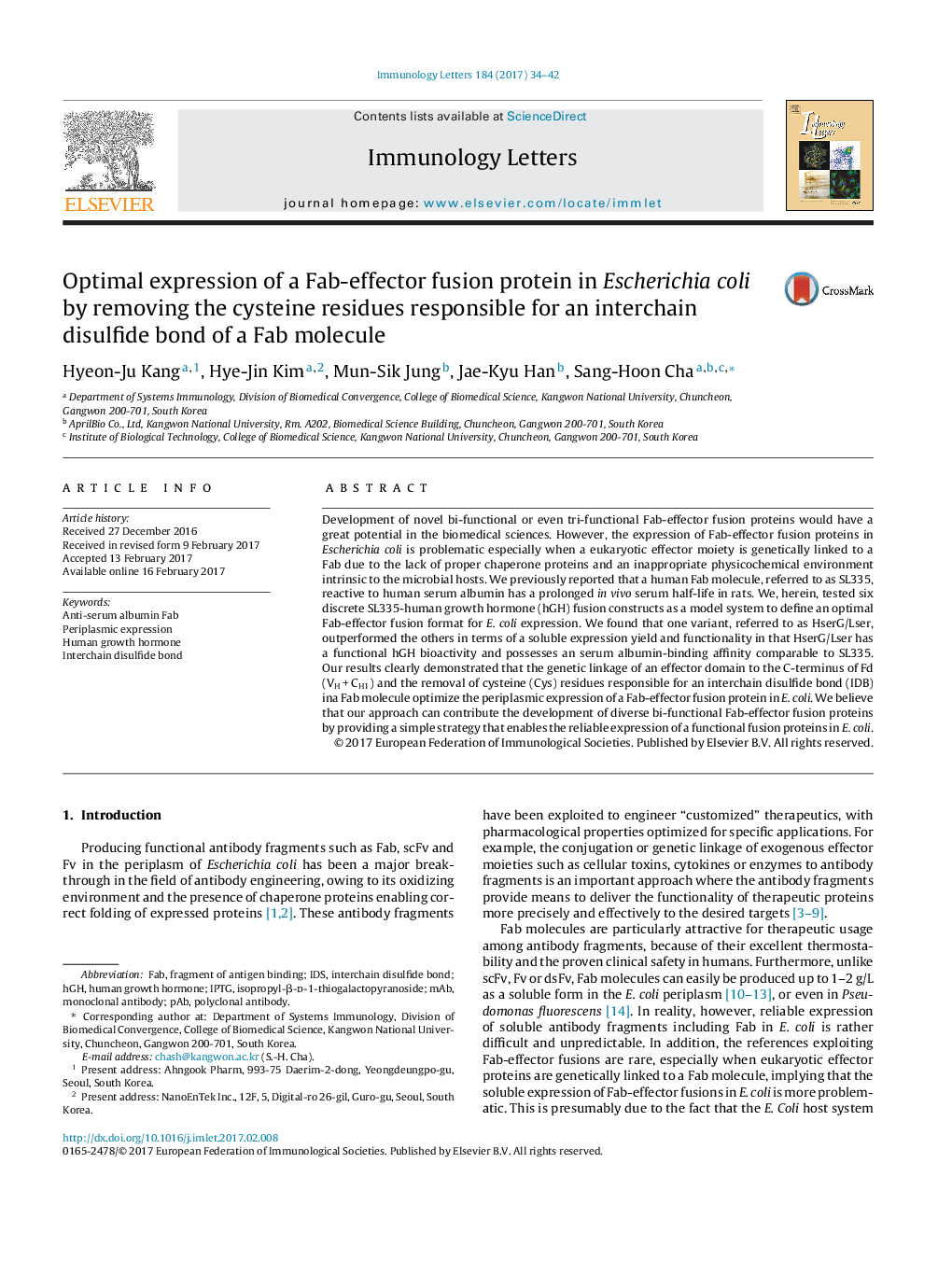| Article ID | Journal | Published Year | Pages | File Type |
|---|---|---|---|---|
| 5666681 | Immunology Letters | 2017 | 9 Pages |
â¢An optimal Fab-hGH construct for the soluble expression in E. coli is determined.â¢Genetic linking of hGH to the C-terminal of a Fd fragment is preferred.â¢Removing the Cys responsible for an interchain disulfide bond is beneficial.â¢Using of an anti-SA Fab such as SL335 would have a unique potential in generating long-acting protein therapeutics.
Development of novel bi-functional or even tri-functional Fab-effector fusion proteins would have a great potential in the biomedical sciences. However, the expression of Fab-effector fusion proteins in Escherichia coli is problematic especially when a eukaryotic effector moiety is genetically linked to a Fab due to the lack of proper chaperone proteins and an inappropriate physicochemical environment intrinsic to the microbial hosts. We previously reported that a human Fab molecule, referred to as SL335, reactive to human serum albumin has a prolonged in vivo serum half-life in rats. We, herein, tested six discrete SL335-human growth hormone (hGH) fusion constructs as a model system to define an optimal Fab-effector fusion format for E. coli expression. We found that one variant, referred to as HserG/Lser, outperformed the others in terms of a soluble expression yield and functionality in that HserG/Lser has a functional hGH bioactivity and possesses an serum albumin-binding affinity comparable to SL335. Our results clearly demonstrated that the genetic linkage of an effector domain to the C-terminus of Fd (VHÂ +Â CH1) and the removal of cysteine (Cys) residues responsible for an interchain disulfide bond (IDB) ina Fab molecule optimize the periplasmic expression of a Fab-effector fusion protein in E. coli. We believe that our approach can contribute the development of diverse bi-functional Fab-effector fusion proteins by providing a simple strategy that enables the reliable expression of a functional fusion proteins in E. coli.
